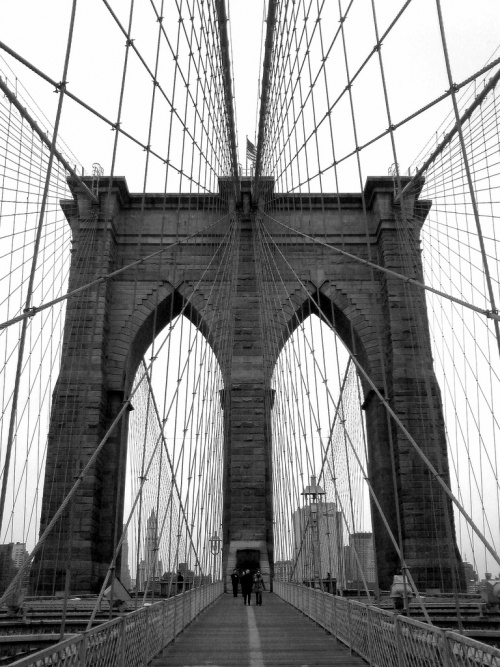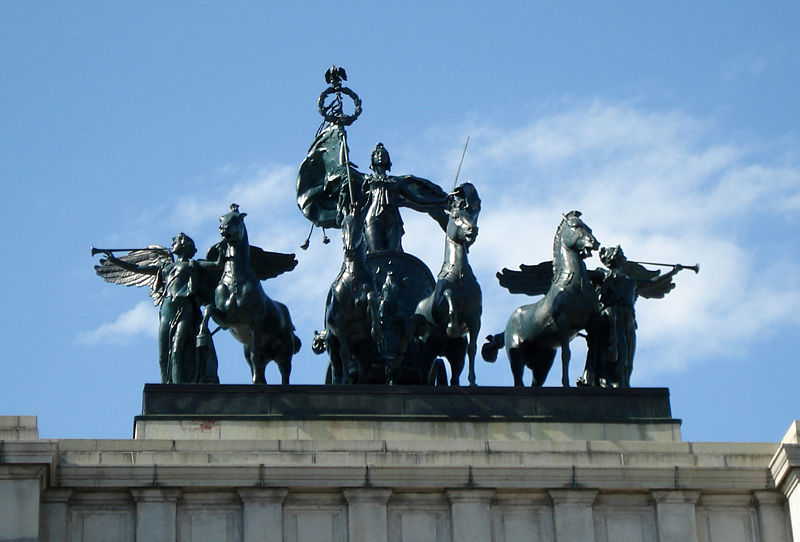From The Peopling of New York City
BROOKLYN

"It'd take a guy a lifetime to know Brooklyn t'roo an' t'roo," wrote novelist Thomas Wolfe. "An' even den, yuh wouldn't know it all."
Brooklyn occupies a special place in the American imagination. The Brooklyn Bridge, Coney Island, Fulton's Ferry, and the Dodgers are just a few of the magical names associated with the borough's history, each conjuring up a thousand unforgettable images depicting the American experience.
It is also the quintessential city of immigrants. One out of every seven Americans can trace their family roots through the streets of Brooklyn. Today, the borough's streets ring with the accents of the newest Americans expressing themselves in Creole, Arabic, Spanish, Chinese, and Korean. If Brooklyn were still independent, it would be the fourth most populous city in the United States. Instead, it is best known as the largest of New York City's five boroughs -- and home to some 2.3 million people.


COMING TO AMERICA
There are many 'push' and 'pull' factors that determine whether people are willing to leave their homes to immigrate to foreign nations. The 'push' factors, those that have forced people to emigrate from their cities and villages, are well-documented. They include famines, religious and political oppression, wars, and abject poverty. It can be said that people such as the Irish and the Jews and Eastern Europeans of the earlier immigrant generations were also refugees, even if, in certain cases, it was not necessarily a legal term applied to them. The United States has long been considered the land of opportunity not simply because of the jobs that it provides, but also the opportunity to be successful without (in theory) suffering for one's religious or political beliefs, or being the target of systematic oppression. Furthermore, this country is separated from much of the world by oceans and its powerful military might. Wars do not have as tremendous an effect on the U.S. as they do on other continents such as Europe and Asia and Africa where fighting is enclosed within the space.
Today, the United States accepts the largest number of refugee immigrants worldwide. While illegal immigration is affecting the country as a whole at an alarming rate, refugee immigration makes up about a tenth of the immigration here. The historical parallels are obvious. Political oppression in the U.S.S.R. and Vietnam pushed many dissenters out of their nations and into the U.S. War and ethnic cleansing in Yugoslavia is the previous 'big' motivating factor for refugee immigration here. From the 1990s onwards, African fleeing many ongoing conflicts, national and civil, have constituted a larger proportion of the refugee immigration.
The unofficial factors of refugee immigration, famine, poverty, and extreme lack of opportunity, are not grounds for seeking asylum to the United States. That is why illegal immigration has risen sharply, among other factors. The United States enjoys, in the eyes of many underdeveloped nations, extreme prosperity and success. It is still the land of opportunity. While Lenin sought to popularize the image of the Soviet Union by promising 'Peace, Bread, Land,' this ideology is arguably more connected to America than any other country.